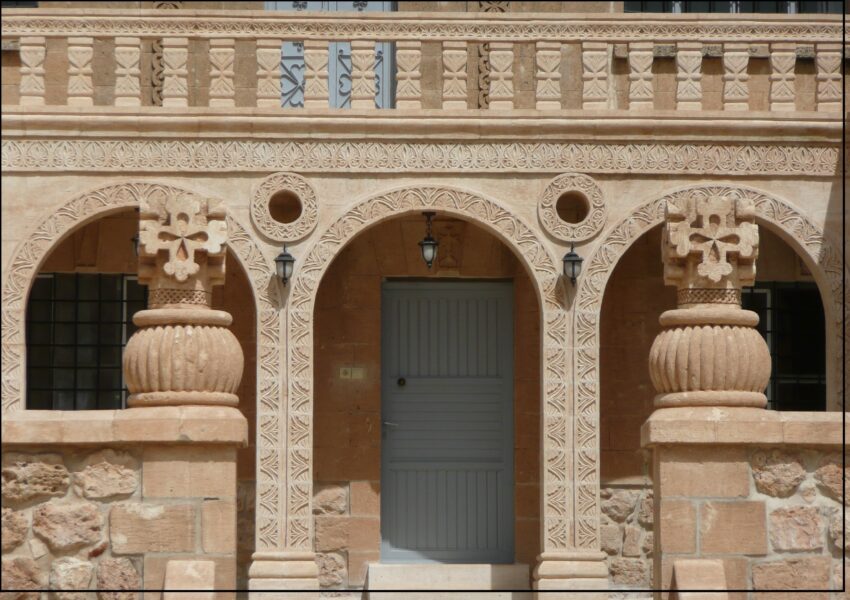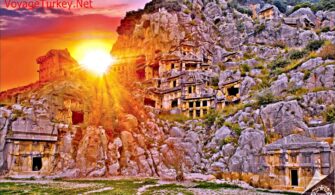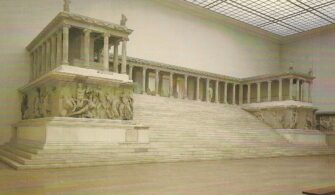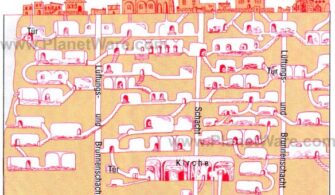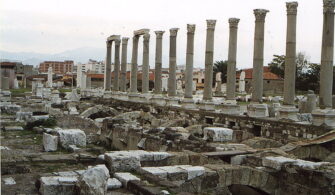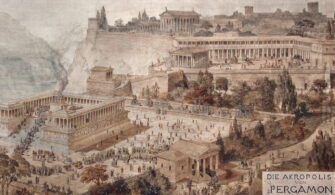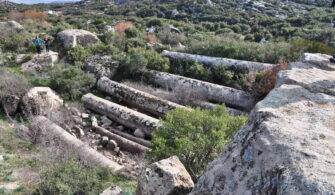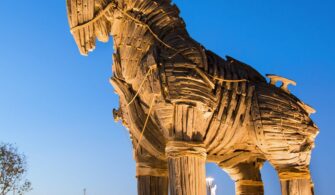General Information About Mor Gabriel Monastery
The Monastery of Mor Gabriel is one of the largest and most famous buildings throughout the history of the Assyrian ancient community. The Mor Gabriel Monastery, which is visited by thousands of local and foreign tourists every year, has a history of more than 1600 years. The monastery, considered to be the Sun of the Eastern Monasteries, is the oldest active monastery in the world.
Founded in 397 by Mor (Saint) Samuel, the Mor Gabriel Monastery is 80 years older than the famous Mor (Saint) Saba Monastery in Palestine. This monastery, with its rare mosaics, bell towers, stone processing and long abbaras, is one of the most important religious centers of early Christianity in Southeastern Anatolia.
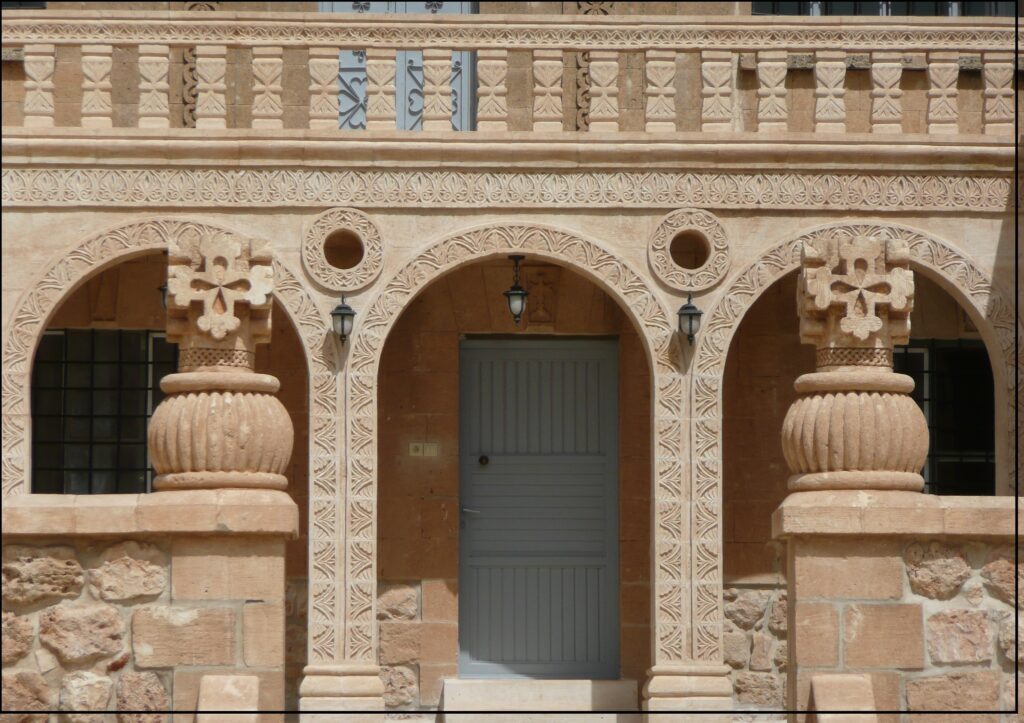
The monastery was home to the Tur Abdin metropolitans from 615 to 1088. Today the metropolitans of Tur Abdin reside in the Mor Gabriel Monastery.
The monastery was named under different names at different times. Although the monastery was first named after its founders, it was later named by the metropolitan Mor (Saint) Gabriel, who ruled the monastery in 668 and became a saint.
The monastery, which is still used as a church today, is held 3 days a week (Wednesday, Friday, and Sunday), with the attendance of only religious officials and students live here.
Location of the Monastery and Transportation to the Monastery
You can reach the monastery with your car, which is about 20 minutes away from the center of Midyat and at the 18th km of the Midyat-İdil road.
The entrance fee to the monastery is 5 TL. The Museum card is not valid.
The monastery is open from 09:00 to 11:30 in the morning and from 13:00 to 16:30 in the afternoon. However, the monastery closes at 16:00 in the winter.
There is a large car park at the entrance of the Mor (Saint) Gabriel Monastery, which is reached by car. Visitors can park at the entrance of the monastery and visit the monastery with guards or guides at the entrance gate.
The guide will accompany you at the entrance to the Monastery of Mor Gabriel, show you the important places of the monastery, and share the features and historical information with you. The Mor Gabriel Monastery tour takes approximately 45 minutes with guides. In addition, visitors can take photographs during the tour independently or with the guides in the monastery.
It should be kept in mind that the monastery is still active and that visitors should pay attention to the warnings in order to prevent the daily lives of the monks and nuns and other clergy living in the monastery. No noise should be made during the tour, should not be spoken loudly and should not be entered in areas and buildings that are forbidden to enter.
History of the Monastery of Mor Gabriel
The foundations of the monastery were laid and built in 397 by Mor (St) Şumil of Savur and Mor (St) Şamun of Kartmin.
The Great Church inside the monastery, also called the House of Prayer, was finished in 512 with financial aid made by the Byzantine emperor Anastasius. At the same time, the dome of Theodora was finished as a baptistery with the help of Empress Theodora.
In 581, the Persians attacked the Tur Abdin area and plundered the monastery and the whole region. The largest monastery library of that period was also looted and damaged.
In 615, Daniel Uzoyo was appointed as the first Metropolitan of the monastery. Uzoyo is not only the monastery but also the metropolis of the entire Tur Abdin region. From this date until 1088, the monastery continued to serve as the religious administration center of the entire Tur Abdin region. The Metropolitan of the Monastery also serves as the Metropolitan of Tur Abdin Region.
After this period, the monastery was constantly subjected to attacks and invasions.
Places to See and Important Buildings at the Monastery of Mor Gabriel
After the monastery was built, various rooms and sections were added to the interior and exterior. The monastery, whose domes, mosaics and doors are made of Midyat’s cut stone, consists of several parts. The monastery’s main church, the Great Church, and the Church of the Virgin Mary, where religious rituals are held, are among the places of interest. The Dome of Theodora is another place worth seeing.
Some of these sections are:
House of Saints (Beth Kadisha) in Mor Gabriyel Monastery
The house of Saints, where the tombs in the niches are prepared for the saints who died at different times, is the most remarkable place of the monastery. This structure was called the House of Martyrs when it was first built because of the burial of martyrs in the early years when the Assyrians accepted Christianity. Later, in addition to martyrs, metropolitans, monastery chiefs, and priests were buried here.
In the Syriac tradition, the body and the tombs of the saints increase the spiritual kudsity of the places where they are located. In this respect, the Mor (Saint) Gabriel Monastery has great spiritual power. Many saints’ tombs and bones are found here. In the monastery, which has an important place for the Christian world, since it was believed that the Prophet Jesus would rise from the east, the clergy was buried in a sitting position with their faces facing east. The tombs are in the form of a barrel roof made of marble and one side is empty. The reason for this is the need stems from the purchase of land so that people can be blessed from here.
Where there are dozens of graves in each niche, the most interesting is the tomb of Mor Gabriel.
Arch of The Mor (St.) Gabriel İn Mor Gabriyel Monastery
It is about 500 meters from the monastery and is located between the monastery and the village of Kivah. It is believed to be a pagan temple from the period before Jesus. The altar, which was thought to be in the arched structure at the beginning of the 1900s, has been under the collapsed stones today.
Prayer House (Beth Slutho) or Great Church (Hayklo Rabo) in Mor Gabriyel Monastery
This is the first church established by the founders of the monastery Mor (Saint) Shmuel and Mor (Saint) Semun to pray. According to legend, the foundation of the monastery begins with the laying of the foundations by an angel and Mor (Saint) Semun. Two saints then built the Prayer House on these foundations.
Architects and craftsmen sent by the emperor Anastasius worked in the construction of the Great Church. On the first night they came here, they saw that they should not dismantle the stones placed by the angel and build the structure on those stones. This church is also called Anastasius Church because of the help of Anastasius in the construction of the church.
The floor and ceiling mosaics in the Great Church are not only spectacular but also outstanding examples of early Christian architecture.
The Great Church is a barrel-vaulted church with a north-south accent. There are three chapels on the east side and the mosaics in the chapel in the middle of the church are dazzling. The area covered by the mosaics is 22.5 meters. Some of the mosaics from the 6th century have disappeared, so it is not clear who made them.
There are two graves on the wall on the east side of the church’s naos. The inscriptions on the graves indicate that the grave on the left belongs to Mor Karpos. In the grave to the right, there are the bones of Mor Sergis, Mor Bakus, Mor Esayo from Aleppo, and Forty Martyrs in Sebastia (Sivas).
Located in the Great Church and built in 1971 and 2003, the bell towers are worth seeing with stone embroidery. The bell tower built in 2003 to the west has another bell tower in its place and the new tower was built for the souls of the dead.
Theodora Dome in Mor Gabriyel Monastery
It is one of the most beautiful buildings in the Monastery of Mor Gabriel. The dome of Theodora is one of the oldest buildings in the monastery and was built in the 6th century. It is thought that the building was originally built as a baptistery. The eight arches in the structure confirm this in various ways. For example, St. Ambrosius said, ‘The number eight contains the integrity of the rebirth’. The number eight symbolizes eternity.
The dome is an eight-domed structure with eight arches from the inside.
The dome is cube-shaped from the outside. There are two reasons why it is called Theodora dome. The first reason was that the dome was built by Empress Theodora, wife of Byzantine Emperor Justinian I. The second, Theodora, daughter of the Byzantine emperor Arcadius, became ill and was healed by the prayers of Mor Shmuel. Arcadius built this structure for the monastery.
The dome of Theodora was later transformed into a monastery kitchen and cafeteria with the next room. A large dough boat made of monolithic marble can be seen inside the room when visited today.
The Great Stone (Kifo Rabtho) in Mor Gabriyel Monastery
The Great Stone (Kifo Rabtho), which can be seen in the dome of Theodora today, was brought to the Monastery from Bozkır village in 777. The Great Stone is 3.27 meters long, 1.30 meters wide and 38 centimeters high and is open to visitors today.
St. Gabriel’s Hermitage Room
This room is next to and above the Great Church. It is known that St. Gabriel was in seclusion in a narrow niche on the wall. This place is closed to visitors
Hermitage Tower in Mor Gabriyel Monastery
The tower is 300 meters away from the monastery, but it is remarkable. The tower has three floors and is closed to visitors.
It is thought that the tower was used as a watchtower or stilit in the early periods of the monastery. According to a rumor, the daughter of the Egyptian king, along with 800 soldiers, brought gifts to Mor Gabriel Monastery and decided to stay here because of the extraordinary events she experienced there. Therefore, she built this tower.
It has a height of 10 meters and measures 6 meters x 5 meters.
Virgin Mary Church in Mor Gabriyel Monastery
This church is reached by crossing the long abbara in front of the Theodora dome. Architecturally, it is a space consisting of three arches and three barrel-vaulted naves. It is dated to the beginning of the 5th century. The altar of the church was built in 1991.
Today, the inscription on the door where visitors enter, Patriarch Ignatius III. Jacob’s visit in 1965 is written.
In the times when the Great Church was closed, worship was performed in this church.
Forty Martyrs’ Shrine
It is above the House of Saints. Today, it is used as a library and living room for the monastery staff. However, it is thought that it was used as a church when it was first built in the 5th century. It was repaired in 1955 and its walls were plastered with lime in 1962. It is known that the interior is decorated with frescoes and motifs of various colors that have not survived to the present day.
It is closed to visitors as monastery staff use this place.
Other Buildings
The House of the Walled, the Church of St. Semun of Kartmin, the Great Cistern, the Great Vaulted Building, the Egyptians Dome, the Dome of the Dead are closed to visitors.
